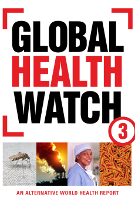6.4 Early marriages, adolescent and young pregnancies
Secretariat note
At the request of a Member State, a report has been prepared to address the health dimensions of early marriages and adolescent pregnancies, including their consequences at the individual, family, community and societal levels. It provides an overview of the ways in which countries are addressing these important public health issues and the processes and tools that WHO has developed to support countries. The Board is invited to consider the report and advise on further action.
- Document EB130/12
Watchers' notes of EB discussion
Cameroon was the first country who took the floor on behalf of AFRO. It strongly supported the document, especially the framework on adolescent health services. AFRO urged greater inclusion of youth, improved access to education for all and legislation outlawing marriage before 18 years. Cameroon mentioned insufficient sex education, harmful cultural practices, poverty as the main factors responsible for the high incidence of early marriages and reproductive complications in the region. AFRO also asked to strengthening adolescent health services and reproductive health as well as overcoming cultural barriers.
India proposed a multisectoral approach integrating poverty alleviation, education and adolescent friendly health services by listing the societal effects it has achieved following greater retention of girls in schools (due to the adoption of an education act).
France, Germany and the US considered early marriages a gross violation of fundamental human rights. The US viewed gender violence with concern, especially in the context of adolescent marriages which are largely ignored and wanted to see more concrete links between MDGs 2, 3, 4 and 5 in the report. Germany highlighted the importance of early sex education saying that this was responsible for its very low incidence of cases.
Brunei targeted adolescent pregnancies by utilizing skilled midwives in its primary health care system. Yemen, among other things, recognized the need to reduce gender stereotypes and urged the UN to intensify efforts that consider early marriage and pregnancy as priorities.
Norway, on behalf of the Scandinavian group, and the Netherlands noted that the MDG on maternal and reproductive health were the worst performing and deplored female genital mutilation. They asked for the inclusion of male youth into programmes and opposed a rising tide of resistance to fundamental human rights on sexual freedoms.
The Holy See condemned gender violence and early marriages but was strongly troubled about provisions in the draft that promote access to so called “emergency contraception” and abortion. According to its view, the Vatican refused to defend any legal recognition of abortion which is considered as an antithesis of human rights.
The UNFPA representative stated that child marriage has historically received little attention quoting a UN report pointing out that marriage before 18 years is a violation of human right.
The Special Adviser to DG on Family and Adolescent Matters reminded the EB that the largest cohort of birth ever seen, tagged the “millennium development babies”, were born a decade ago and are now entering adolescence. She urged commitment to protect this cohort.
In conclusion, all regions except the Holy See did not fault the draft, but they urged more integration between MDGs, youth participation and greater multisectoral approach with emphasis on education, friendly health services and legislation.
PHM Comment
Excellent paper. It seems that its appearance on the EB agenda may be in order to draw MS attention to the shortly to be published "WHO Guidelines on preventing early pregnancy and poor reproductive outcomes among adolescents."
Babies born to adolescent mothers (15–19 years) account for roughly 11% of all births worldwide, with 95% occurring in developing countries. For some of these young women, pregnancy and childbirth are planned and wanted, but for many others they are not. Responsible factors include the pressure to marry and bear children early, limited education or employment prospects, lack of knowledge of or access to contraception, and unwanted (coerced) sex.
According to these new WHO guidelines there is a “growing recognition that adolescent pregnancy contributes to maternal mortality, to perinatal and infant mortality, and to the vicious cycle of ill-health and poverty.”
WHO’s Department of Maternal, Newborn, Child and Adolescent Health created these guidelines to recommend action for preventing early pregnancy and poor reproductive outcomes. They have been developed through systematic review of the evidence and technical expertise of policy-makers, programme managers and front-line workers from countries around the world.




